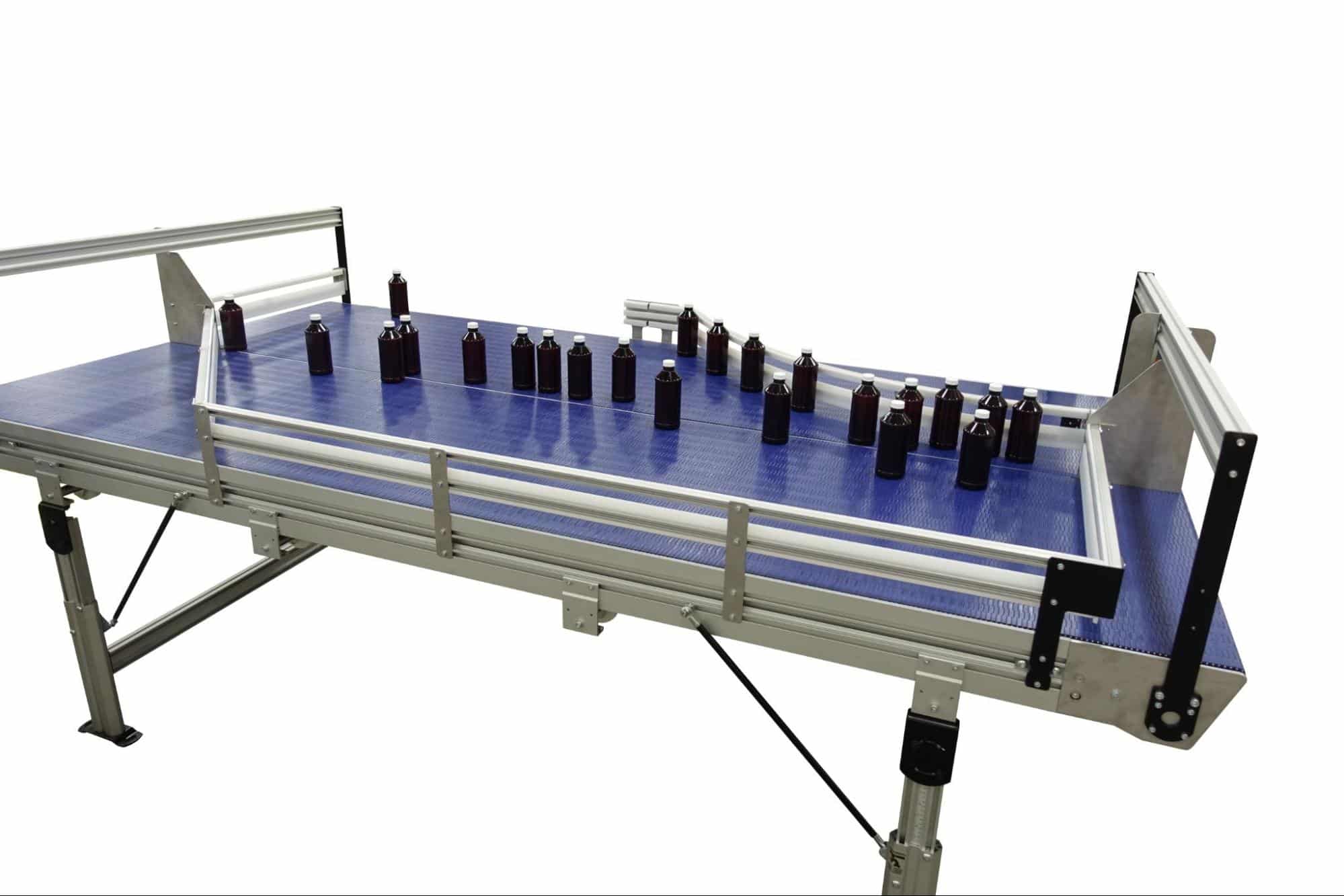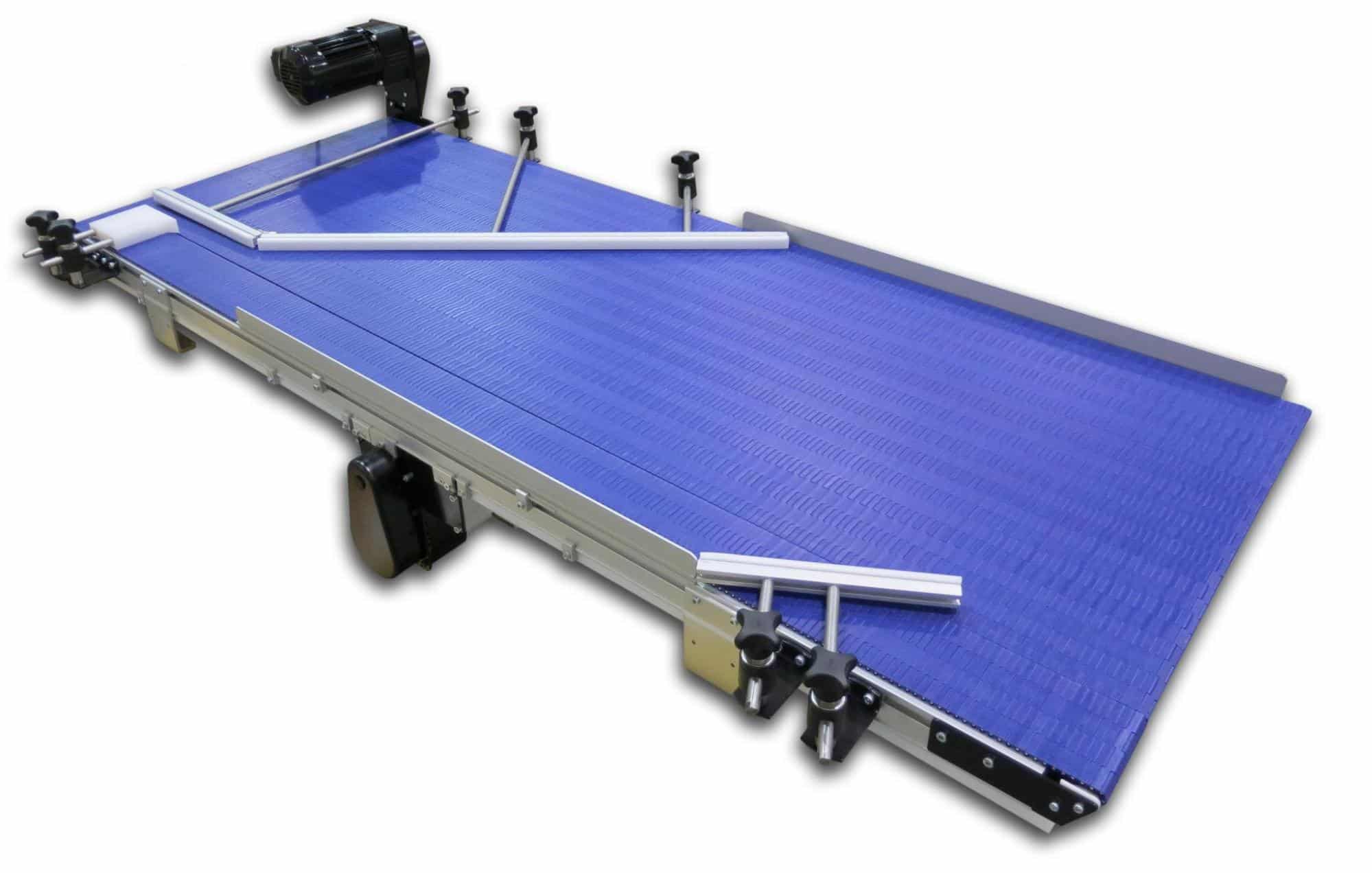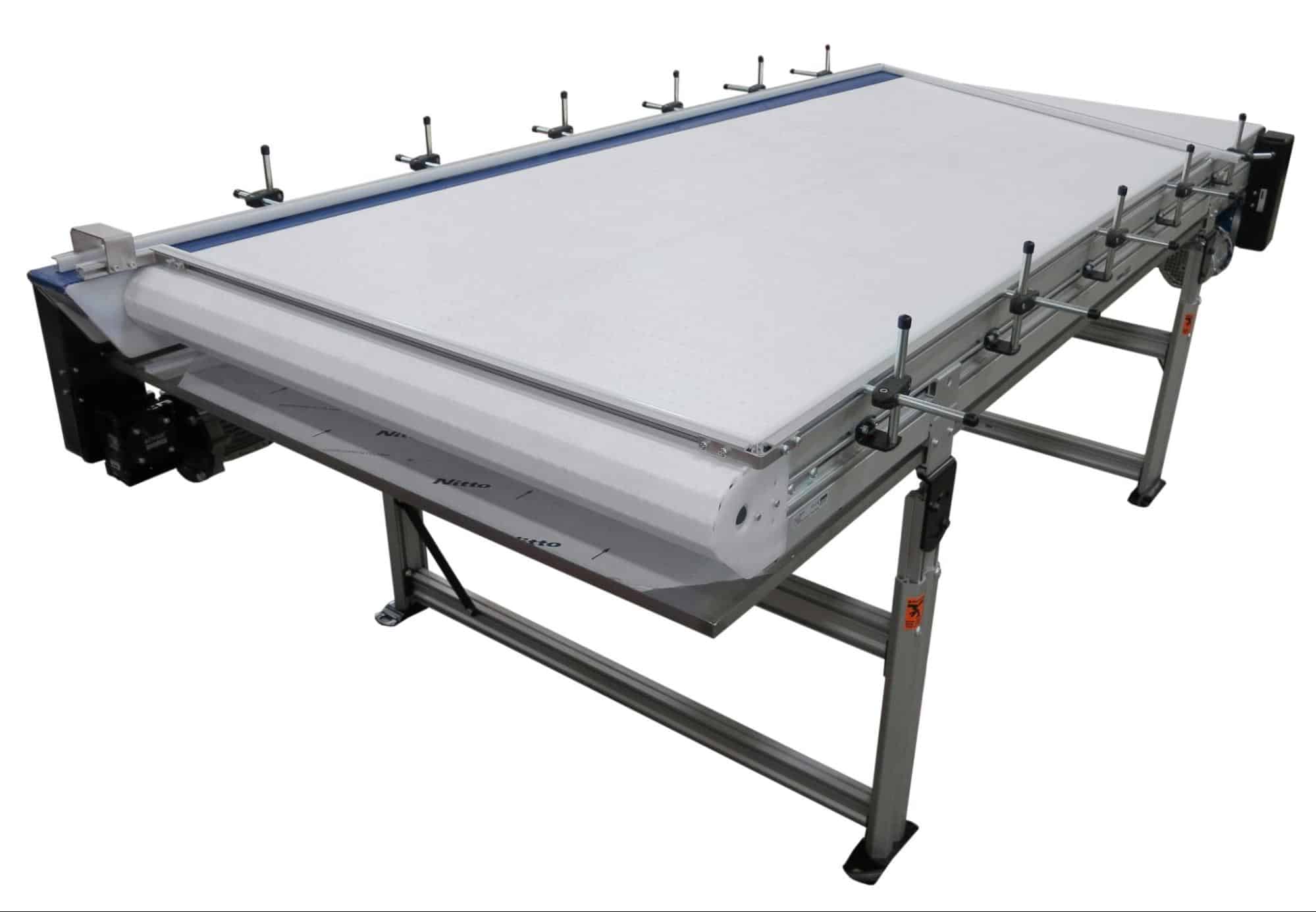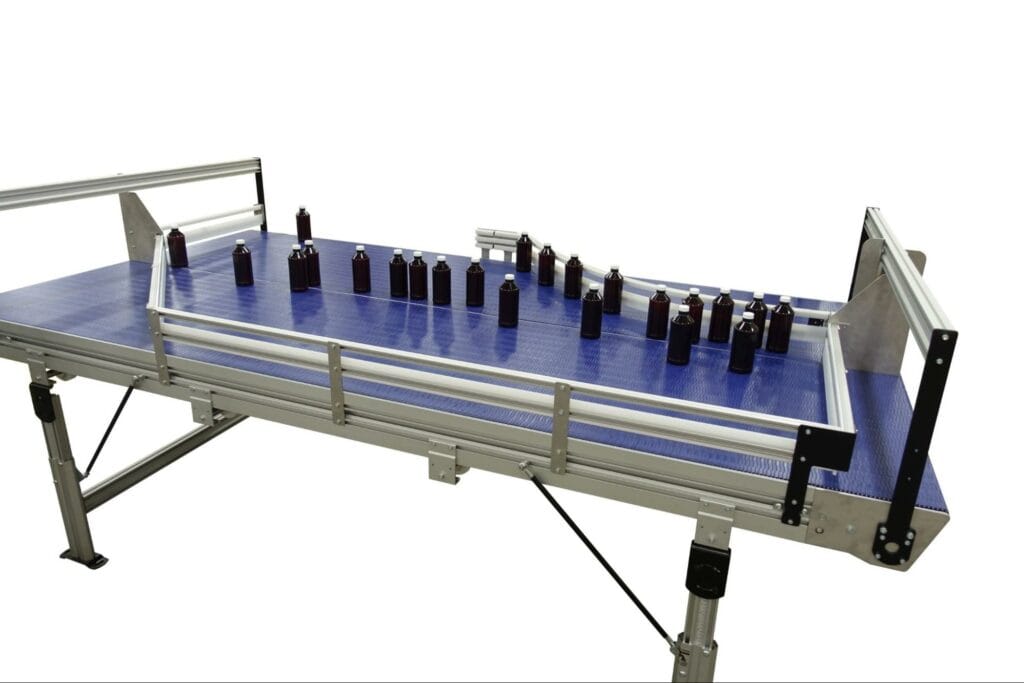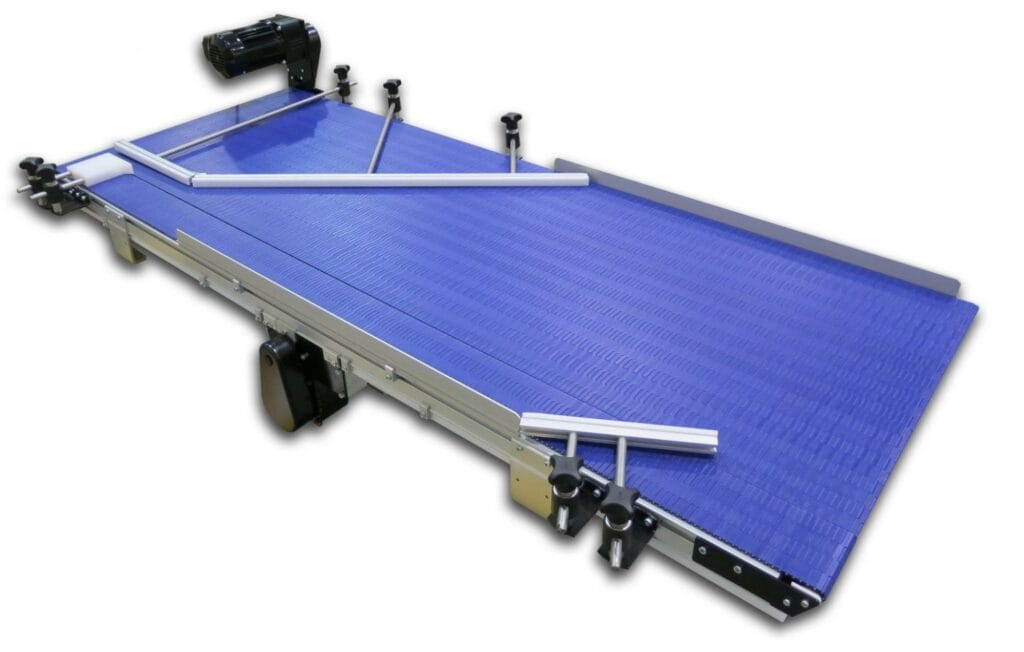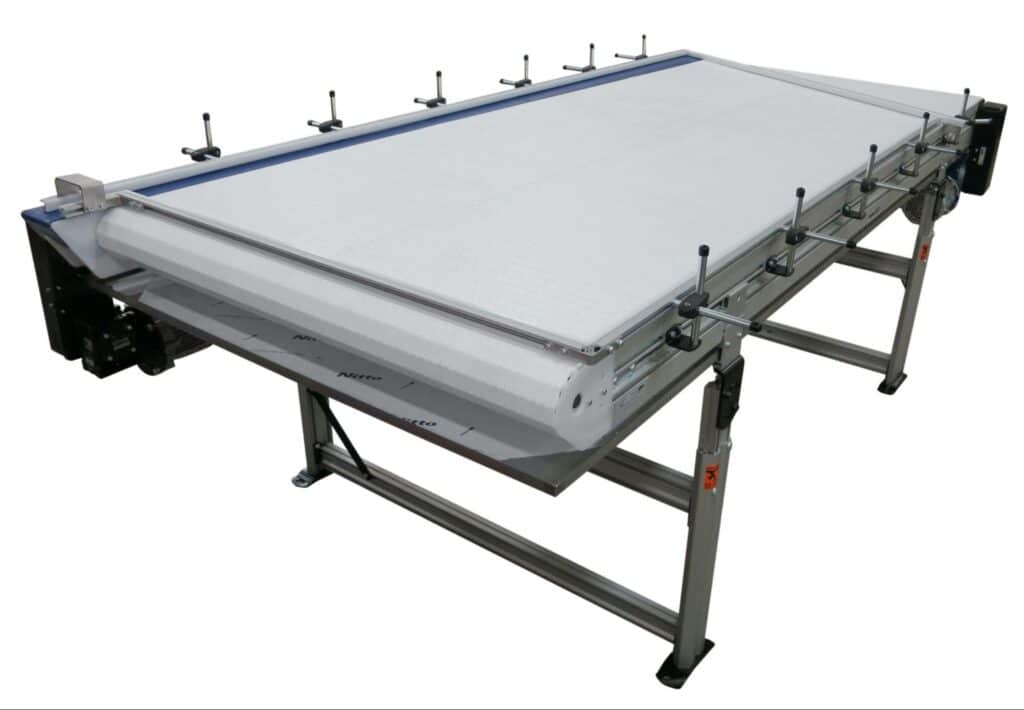Engineered Solutions
Recirculating Conveyors
Recirculating Conveyors
Manufacturing lines require mechanical solutions to facilitate the consistent flow products to maximize throughput, and recirculating conveyors are a common part of these applications.
What are Recirculating Conveyors?
A recirculating conveyor is a piece of machinery that helps move products down a manufacturing line. It optimizes the production process by helping to move products quickly and without error — avoiding backups, redirections, and shutdowns.
Features of Recirculating Conveyors
The basic features of a recirculating conveyor are:
- At least two conveyor belts
- A motor to run the belts
- Side guides and dividers to control the flow of parts
Recirculating Tables
A recirculating table is a type of conveyor that creates space for a product to accumulate, and controls the flow to the next process in the manufacturing line.
A type of accumulation conveyor, its belts must be low-friction, and can be made of either fabric, modular belt or plastic chain.
Accumulation Conveyors
How Do Recirculating Tables Work?
A recirculating table works by using two or more belts moving in opposite directions to either recirculate products continuously until they can be moved in a singular line to the next step of the process, or accumulate products until an employee is ready to handle them.
Systems using recirculating tables can run unattended, and don’t require electronic controls.
Problems Recirculating Tables Solve
When moving products down a manufacturing line, there may be places that experience backups and cause the entire line to slow or shut down.
To avoid having to stop upstream production or redirect product, a recirculating table can create a space to accumulate product and control the flow to the next process.
They especially work well for delicate products, because they minimize back pressure on the conveyor, reducing the likelihood of product damage and loss.
How to Use a Recirculating Table
Recirculating tables can be custom-made to incorporate a variety of different features, but the basic process remains consistent. First, parts are loaded onto the conveyor. Next, they’re guided into a single file line. Finally, parts are singulated and leave the system via a conveyor.
In order to better illustrate the process, here’s an example of a solution we recently developed for a client:
- An employee manually dumps the parts onto a recirculating conveyor that uses two belts and a guide piece to accumulate parts, then directs them toward an opening.
- At the opening, a UHMW block ensures they enter single-file and in the correct orientation, knocking over any parts standing on their side.
- At the end of the line, a pneumatic “v-block” moves the parts one at a time into position so they can be moved to the next machine.
Advantages of Recirculating Conveyors
Among the benefits of recirculating conveyors most commonly reported by our clients:
- Product lines are better able to keep up with machine output, thanks to the organization provided by conveyors.
- They’re an excellent choice for handling delicate products, because they minimize pressure that can cause product damage and loss.
- They allow for simple product singulation.
- Dorner is able to customize recirculating conveyors to meet your specific needs.
Frequently Asked Questions About Recirculating Tables
Every type of conveyor has practical use, because manufacturers’ needs vary. Recirculating conveyors are the optimal solution for operations where automation is needed to help move parts or products smoothly through a manufacturing line.
Yes; companies such as Dorner that make custom recirculating tables create solutions that are able to handle large parts.
It’s important to use only low-friction fabric modular belts or plastic chain with recirculating tables, so that products are able to move along as designed.
Yes; recirculating conveyors can be combined with other types of conveyors as part of an integrated manufacturing line.
At Dorner, we engineer and test all of our conveyor designs to ensure trouble-free performance and reduce the cost of ownership. This allows us to offer every customer a 10-year limited warranty, unmatched by any other company in the industry.
This warranty protects the original purchaser against defects in material and workmanship under normal use, proper maintenance, and cleaning. While we will repair or replace defective parts, normal wear is not covered. Components manufactured by other companies are covered by the original manufacturer’s warranty.
Dorner designs custom conveyor systems to help our customers achieve optimal efficiency and productivity along their manufacturing lines.
Our state-of-the-art manufacturing facility enables us to build these systems quickly and cost effectively. We offer start-to-finish installation and training services, as well as maintenance planning, for each custom conveyor system we create.
Dorner’s custom conveyor systems are developed by our Engineered Solutions Group — full-service team comprised of drafters, designers, project managers, installers, and application, electrical and mechanical engineers. With 30+ years of experience in providing engineering expertise to our customers across more than 40 industries, this team is able to draw from a vast base of knowledge and apply it to your specific needs.
The Engineered Solutions Group offers services in concept, design and needs analysis, along with layout and CAD modeling in 2D or 3D. Our services cover mechanical design, phased engineering, controls (HMI, PLC and servo panel builds), FAT and SAT, and replacement and spare parts programs.



